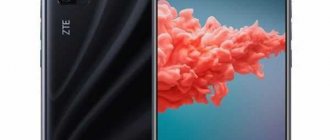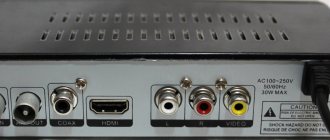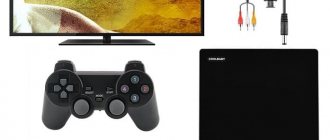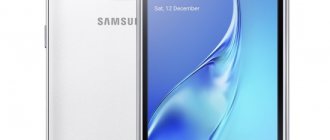Expensive does not mean a camera phone
Not all sellers and electronics manufacturers provide this information to buyers who want to purchase a smartphone capable of taking high-quality pictures.
Is it worth overpaying for several cameras in one gadget, a huge number of pixels in the matrix, or other advertised photo functions of an electronic device? Megapixels first! It is with them that most of the advertising tricks of manufacturers are associated. The principle is elementary - the more, the better the smartphone camera supposedly shoots. But this statement is not always true. The fact is that a pixel is the basic element of any electronic camera matrix. Since several million basic elements that assemble the display of light into a single electronic image fit on a small platform of a few centimeters, the unit of measurement received the prefix “mega”.
“The pixel size is of great importance,” says photographer Alexey Grechishchev. — If a smartphone’s camera matrix contains a large number of pixels, but their size is small, then the quality of the pictures will leave much to be desired. In this case, very “noisy” and blurry photographs will be obtained in the dark or in a poorly lit room. It will not be possible to improve it in graphic editors. Conversely, larger pixels are the key to better photography because they capture more data. At the same time, some manufacturers, using new technologies, manage to reduce the pixel size without deteriorating, and sometimes even improving, the quality of images.
Today, the most well-known manufacturers do not pursue quantity, giving preference to quality. Their smartphones have cameras with matrices of 12-16 megapixels, and the pixel size in them is usually 1.4 microns. Competitors offer cameras with much higher megapixel counts (20 to 40), but their pixel sizes range from 1.1 to 1.25 microns.
Additional features
Ask about the microSD slot. If you are not going to take a lot of photographs or download games, then the size of the memory is not so important. But otherwise, you should take a closer look at the modification with 64 GB and higher. If the device does not have a slot, then you will not be able to expand the memory.
You can also note the availability of space for a SIM card. If you use one, then everything is fine. But not all smartphones support two SIM cards. In addition, you need to find out what SIM card format is supported: nano, micro or eSIM. Do not forget that the use of the latter is not yet very widespread in Belarus. Therefore, problems may arise.
Most flagships now have an NFC chip. It allows you to link a bank card to your phone and pay with it contactlessly. However, it also works instead of Bluetooth. Only it transmits information even faster and more securely, but at a shorter distance.
The material of the case does not always protect it from all damage. Therefore, it is worth looking at whether the smartphone has drop resistance and protection according to the IPXX standard. This standard guarantees varying degrees of protection from moisture and dust. IP68 is the highest level of protection. With it, if you drop the gadget into water and quickly take it out, nothing will happen to the device. But it’s safer, of course, not to take risks like that.
Another plus is support for wireless and fast charging. While the first is relatively rare, the second can be seen in many devices. The difference is in power, there are options for 10, 18 and 27 W. In any case, even some kind of acceleration helps save time.
Support for reverse charging is another advantage. It makes it possible to charge a smart watch, tracker or headphones from the device. This solution seems very convenient when traveling.
Every day the competition among smartphones is getting tougher, so manufacturers are forced to do everything to make their products relevant to the buyer. Therefore, more and more new technologies and features are appearing that make a smartphone an indispensable thing in everyday life.
Open the diaphragm
The quality of the image largely depends on the aperture of the camera. Its purpose is to regulate the flow of light entering through the lens onto the matrix of an electronic device. The wider the camera’s “pupil” can open, the better if shooting takes place at night or in a poorly lit room.
The F number is used to indicate the capabilities of the aperture. The lower it is, the more capabilities the gadget has. For example, today most smartphone cameras have an aperture of f/2 and f/2.2. Top models are usually equipped with cameras with the best indicator - f/1.8 and f/1.7. At the same time, some manufacturers create cameras with automatic aperture adjustment: in sunny weather, it can independently shrink to f/2.4, and in a poorly lit room, expand to f/1.5. Thus, there will be no flare in the pictures from too bright sunlight, and objects in low light conditions will be displayed without interference.
CPU
This is one of the most important parts that no phone can do without. The speed of the entire phone depends on the power of the chip. It, in turn, is influenced by the clock frequency, the number and quality of cores, as well as production technology. For normal operation, the clock frequency should not be lower than 1600 MHz. Otherwise, you will experience difficulties opening applications and loading games. Almost every chip consists of 8 cores, the only difference is their quality. Here it is better to be interested in a separately selected processor.
Every day engineers are improving the power of processors. Therefore, it is impossible to rank them. Moreover, the performance of the device depends not only on one processor. To measure it, there are special tests - benchmarks. AnTuTu, GeekBench, for example, will help determine the power in points, and they can already be compared with the scores of other gadgets.
They don't skimp on optics
“Good optics are large, because with the help of a large lens you can take a very capacious picture,” photographer Maxim Zilberman is sure. — Almost all smartphone designers solve a difficult problem by placing the camera in a small case 4-5 millimeters thick. At the same time, they solve it at the expense of the quality of the images.
The material from which the camera lenses are made is also important. For a good lens you need glass of optical grades. But smartphone manufacturers often make lenses out of plastic lenses. They are cheaper, more easily scratched, less transparent and their optical characteristics change over time.
However, some manufacturers today, on the contrary, are trying to emphasize the quality of their cameras through cooperation with well-known photo brands. In addition to improved frame processing algorithms, it makes it possible to use higher quality optical lens materials. Pictures taken with such optics look detailed and realistic.
Checking the quality of the lenses in the camera of any smartphone is quite simple - you need to look at the image on the big screen. If there are no blurs in the corners of the photo, and small objects are not surrounded by colored halos, then the manufacturer has not saved on optics.
Sign in color
Each camera phone manufacturer has its own color signature. It is born from a complex set of technical factors, some of which we tried to describe above. For example, photos from SONY smartphone cameras taken in standard mode can be distinguished by cold, but saturated and sometimes unnatural colors. It is the colorful photographs that delight fans of this brand.
Owners of Apple iPhones have different values - slightly darkened photos with deep, non-garish tones. They are well suited for a family album, for social networks, and for printing on a photo printer. Apple founder Steve Jobs was, in principle, a fan of simplicity and versatility.
Photos of flagship models of Samsung smartphones stand out for their realism: the face is pale, the wrinkles on it are all visible, and the sparkle in the eyes is like in a mirror. But in general, the color range maintains a warm range of shades, which ultimately creates very pleasant “straw” shots in daylight and incredibly romantic shots of cities at night.
The color style of smartphone cameras from the Chinese manufacturer Huawei is even more ascetic. In the photographs we see cool shades and sharpened contours of objects. There are no embellishments in the post-processing of frames; the surrounding reality is presented in the most natural tones.
Each camera phone manufacturer has its own color signature.
Specifically
Galaxy Note 20 Ultra – beautiful, strict, ultimate
An extremely impressive flagship with a stylus from Korean Samsung. The gadget has the most advanced parameters in literally everything, including a 108 MP camera and the world's first LTPO display for a smartphone.
The highlight of the series is the built-in stylus. It has many functions and the ability to even act as a remote control for the device. The key difference between the Note 20 Ultra and all other Notes is the response speed of the stylus. Here it is 9 milliseconds instead of the usual 42 ms. As a result, the stylus passes across the device’s screen like a real pencil on a sheet of paper.
Front and back of the Galaxy Note 20 Ultra. The smartphone looks very impressive and is easily distinguishable from all cheaper models from the front.
What is beautiful about the Note 20 Ultra smartphone:
- This is the leader in framelessness among regular smartphones. The display occupies almost the maximum possible area of the front surface, leaving only a tiny space for frames. Only smartphones with a waterfall screen can offer more impressive performance;
- Unlike the Galaxy S series, there is a noticeably more strict, solid design with an emphasis on flat edges and less “soapy” outlines;
The Galaxy Note 20 Ultra in bronze is incredibly beautiful. With a 6.9'' screen, the device is also quite compact
- The highest display quality: 120 Hz, a record peak brightness among other smartphones at 1600 nits (iPhone 12 Pro Max – 1200 nits), the best contrast level and other features. The Note 20 Ultra's screen set 11 global records in DisplayMate tests and became a leader in DxOMark tests;
- The new bronze color looks very expensive and stylish.
Fundamental details
Take a look at the technical specifications of the gadget yourself, where there is, for example, information not only about the number, but also the size of pixels in the camera matrix. An acceptable value is 1.2 microns and above. There are exceptions: some manufacturers use technology that combines several small pixels into one large one.
An important factor for the quality of images is the aperture aperture, which is measured by the F number. The smaller it is, the more capabilities the camera has. But it’s even better if the manufacturer has provided several aperture operating modes: in strong and low light.
The presence of optical stabilization is also of great importance, which prevents image blurring in turbulent shooting conditions.
DxOMark-2019 rating
Autonomy
The battery capacity directly indicates how long the device will last on one charge. In addition, both the screen and the processor affect the operating time. But even the most powerful battery can be drained in a day by playing without interruption. If autonomy is important to you, control the use of the gadget.
With modern specifications, a 2000-3000 mAh battery is enough for the phone to last a day with moderate use: calls, sometimes accessing the Internet, watching news. A 4000 mAh battery will last for a day and a half. And if you control your Internet use and avoid games, you can count on two days.
This may also be complemented by the possibility of fast charging. If the battery lasts less than 12 hours, then the ability to replenish it by 50-60% in half an hour is already good.











